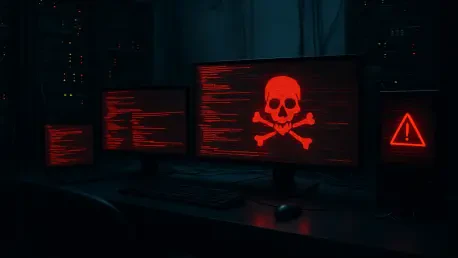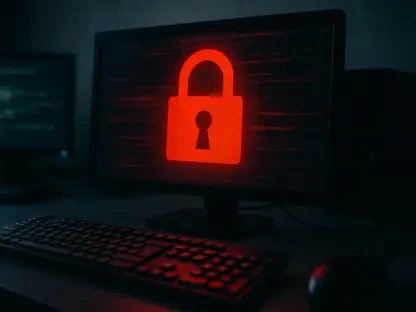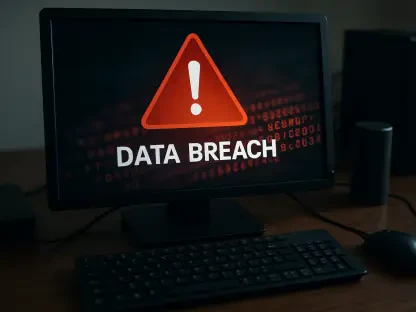In an era where digital connectivity underpins nearly every aspect of business operations, a recent cyberattack on Eurofiber, a French B2B wholesale telecommunications company, has sent ripples through the industry, highlighting the fragility of even specialized providers and raising urgent concerns. On November 13, attackers infiltrated the company’s French operations, targeting its cloud division and regional brands such as Eurafibre, FullSave, Netiwan, and Avelia by exploiting a vulnerability in the ticket management platform. While the breach resulted in stolen data, Eurofiber swiftly clarified that no banking details or critical personal information were compromised, and customer-facing services remained unaffected. However, internal systems used by indirect sales and wholesale partners faced disruptions, exposing a critical weak point. This incident not only underscores the growing threat to B2B telcos but also raises urgent questions about the adequacy of cybersecurity measures in a sector integral to global communication networks.
Incident Details and Immediate Response
The cyberattack on Eurofiber revealed a targeted approach by cybercriminals who honed in on a specific vulnerability within the company’s ticket management system, a platform often overlooked in broader security audits. Once inside, the attackers accessed stored data, though the scope of the breach was contained, avoiding sensitive financial or personal details. Eurofiber acted promptly to patch the exploited flaw, ensuring that customer services continued without interruption, a testament to the resilience of its core infrastructure. Despite this, the operational hiccups in internal systems underscored how even limited breaches can ripple through partner ecosystems. The company also notified affected clients and collaborated with French cybersecurity agencies like CNIL and ANSSI to manage the fallout, including a potential extortion attempt, though specifics on ransom demands remain undisclosed. This rapid response mitigated immediate damage, but it also highlighted the need for preemptive defenses against such precise attacks in niche operational tools.
Beyond the technical response, Eurofiber’s transparency in addressing the incident sets a notable precedent for crisis management in the telecommunications sector. By openly communicating with stakeholders and authorities, the company avoided the pitfalls of delayed disclosure that have plagued other firms in similar situations. The focus on securing internal systems post-breach, coupled with enhanced security protocols, demonstrates a commitment to learning from the incident. Yet, the disruption to wholesale and indirect sales channels serves as a reminder that B2B providers are not just service facilitators but also critical links in broader supply chains. A breach at this level can erode trust among partners who rely on seamless operations. Eurofiber’s experience emphasizes that while customer-facing services may remain intact, the hidden costs of internal disruptions can still carry significant long-term implications for business relationships and operational credibility.
Broader Industry Trends and Vulnerabilities
The Eurofiber incident is not an isolated event but part of a disturbing pattern of cyberattacks targeting B2B telecommunications providers across Europe, reflecting a sector increasingly under siege. Companies like Colt and ICUK have faced similar threats recently, with ICUK grappling with DDoS attacks that briefly disrupted services and Colt enduring a prolonged recovery after an intrusion attributed to the Warlock ransomware group, though official confirmation of ransomware involvement remains absent. These cases illustrate the diversity of tactics employed by cybercriminals, from overwhelming systems with traffic to stealthy data theft and potential extortion schemes. B2B telcos, often operating behind the scenes compared to consumer-facing giants like Orange, are proving to be attractive targets due to their critical role in infrastructure and sometimes less robust security budgets. Eurofiber’s annual revenue of €308 million pales against Orange’s quarterly €9.9 billion, yet it faced comparable risks, proving that scale offers no immunity.
This growing vulnerability in the B2B telco space calls for a deeper examination of systemic weaknesses, particularly in operational systems like ticketing platforms that may not receive the same security scrutiny as core networks. The impact of these attacks often extends beyond immediate data loss, affecting partner trust and operational continuity, as seen in Eurofiber’s internal system disruptions. Industry observers note that cybercriminals are becoming more sophisticated, tailoring attacks to exploit specific entry points rather than relying on broad, indiscriminate methods. The potential for ransomware or extortion adds another layer of complexity, as companies must weigh the risks of payment against prolonged downtime. As attacks multiply, the consensus is clear: B2B telecommunications providers must invest heavily in comprehensive cybersecurity frameworks that protect not just customer data but also the intricate web of internal and partner-facing systems that keep the industry running.
Strengthening Defenses for the Future
Looking back, the swift actions taken by Eurofiber to patch vulnerabilities and secure systems after the November 13 attack limited the damage and prevented a broader crisis. Collaboration with cybersecurity experts and transparent communication with authorities and clients helped manage the immediate aftermath, setting a standard for rapid response. However, the incident, alongside similar breaches at Colt and ICUK, painted a stark picture of an industry under threat, where even smaller players faced sophisticated adversaries. The operational disruptions, though confined to internal systems, reminded everyone of the hidden costs of such breaches on partner ecosystems. Reflecting on these events, it became evident that reactive measures alone were insufficient against evolving cyber threats.
Moving forward, B2B telcos must prioritize proactive cybersecurity investments, focusing on fortifying overlooked systems like ticketing platforms and enhancing employee training to recognize threats early. Adopting advanced threat detection tools and fostering industry-wide collaboration to share intelligence on emerging risks could prevent future incidents. Regular audits and stress tests of operational infrastructure should become standard practice to identify weaknesses before they are exploited. Additionally, establishing clear protocols for extortion scenarios will equip companies to respond decisively without compromising integrity. The lessons from Eurofiber’s breach suggest that building a resilient defense is not just about technology but also about cultivating a culture of vigilance and preparedness across the sector to safeguard critical communication networks.









